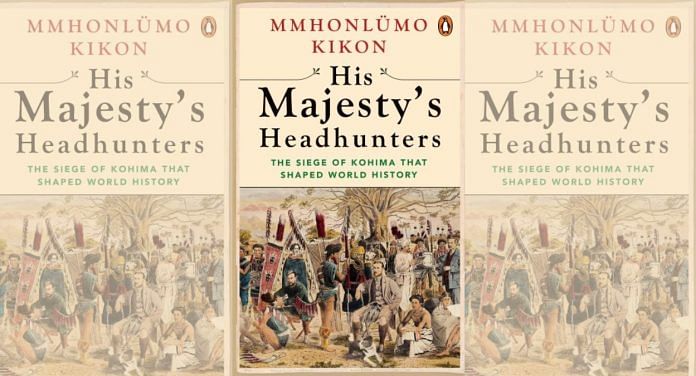New Delhi: A new book by Naga poet and politician Mmhonlumo Kikon intricately explores a vital but often overlooked facet of the Battle of Kohima in World War II. The book also unfolds the compelling story of how Nagaland’s capital evolved into the political and administrative headquarters of the British Government.
Titled, ‘His Majesty’s Headhunters,’ is a monumental effort at documenting the history of Nagaland, colonial India and World War II through the one event that tied them together — the 1944 battle between Allied Forces and the Japanese army in Kohima.
Published by Penguin India, ‘His Majesty’s Headhunters: The Siege of Kohima That Shaped World History’ by Mmhonlumo Kikon will be released on 27 November on Softcover, ThePrint’s online venue to launch non-fiction books.
The Battle of Kohima, often referred to as the ‘Stalingrad of the East,’ marked a pivotal moment in World War II. Yet, Kikon’s narrative diverges from the mainstream perspective of the battle, notably incorporating the often-overlooked Naga perspective.
Kikon’s historical account offers a distinctive perspective on Nagaland and its courageous warriors. His research for the book draws extensively from the firsthand accounts of officers and soldiers who participated in the Battle of Kohima.
In addition to Kikon’s insights, the recognition of the Naga warriors continues with the recent award of the President’s Colour to the 3rd Battalion of the Naga Regiment, highlighting their valour and contributions. This award symbolizes the collective spirit and heroic deeds of the Naga battalion in the Indian Army.
Lieutenant General Sato, the commander of the Japanese army himself is said to have acknowledged the Naga people’s pivotal role in the Allied forces’ win. The book also recounts the battle’s status as the British Empire’s final struggle and the inaugural clash of ‘New India’.
Kikon, an Aspen Fellow, is the author of three poetry collections: ‘Slingstones’ (2021), ‘The Village Empire’ (2019), and ‘The Penmi Poems’ (2018). He is a two-time legislator in the Nagaland Legislative Assembly and serves as the national spokesperson for the Bharatiya Janata Party.
Praising the book, IIT Guwahati professor Arupjyoti Saikia said that it offers an account of the profound and lasting impact of the Second World War on northeastern India. He added that it “brilliantly unpacks the making and unmaking of British colonialism in the Naga Hills.”
Bibek Debroy, chairman of the Prime Minister’s Economic Advisory Council (PM-EAC), commended the book, describing it as a fascinating and well-researched account of the Kohima siege.
“Many common beliefs are shattered and, as befits a poet, not only is the account engagingly written, it is sometimes lyrical. All too often, people from other parts of India don’t know enough about the region and its history. Kikon has produced a book that is an eye-opener,” Debroy added.






